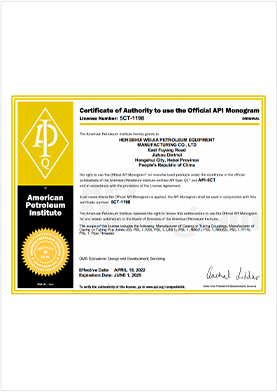- Afrikaans
- Albanian
- Amharic
- Arabic
- Armenian
- Azerbaijani
- Basque
- Belarusian
- Bengali
- Bosnian
- Bulgarian
- Catalan
- Cebuano
- Corsican
- Croatian
- Czech
- Danish
- Dutch
- English
- Esperanto
- Estonian
- Finnish
- French
- Frisian
- Galician
- Georgian
- German
- Greek
- Gujarati
- Haitian Creole
- hausa
- hawaiian
- Hebrew
- Hindi
- Miao
- Hungarian
- Icelandic
- igbo
- Indonesian
- irish
- Italian
- Japanese
- Javanese
- Kannada
- kazakh
- Khmer
- Rwandese
- Korean
- Kurdish
- Kyrgyz
- Lao
- Latin
- Latvian
- Lithuanian
- Luxembourgish
- Macedonian
- Malgashi
- Malay
- Malayalam
- Maltese
- Maori
- Marathi
- Mongolian
- Myanmar
- Nepali
- Norwegian
- Norwegian
- Occitan
- Pashto
- Persian
- Polish
- Portuguese
- Punjabi
- Romanian
- Russian
- Samoan
- Scottish Gaelic
- Serbian
- Sesotho
- Shona
- Sindhi
- Sinhala
- Slovak
- Slovenian
- Somali
- Spanish
- Sundanese
- Swahili
- Swedish
- Tagalog
- Tajik
- Tamil
- Tatar
- Telugu
- Thai
- Turkish
- Turkmen
- Ukrainian
- Urdu
- Uighur
- Uzbek
- Vietnamese
- Welsh
- Bantu
- Yiddish
- Yoruba
- Zulu
Understanding the Importance of Well Casing Couplings in Drilling Operations
Understanding Well Casing Coupling An Essential Component in Drilling Operations
In the field of oil and gas drilling, the integrity of the well structure is crucial to ensure safety, efficiency, and optimal production rates. One of the unsung heroes of this process is the well casing coupling, a small yet vital element that plays a significant role in the overall drilling operation. This article explores the importance of well casing coupling, its types, applications, and the factors that influence its selection.
What is Well Casing Coupling?
Well casing is a series of steel pipes that are installed in the borehole after drilling to stabilize the well and prevent the walls from collapsing. Couplings are threaded connectors that join these casings together, allowing for a continuous casing string to be installed throughout the well's length. The coupling must provide a reliable seal to prevent fluid leaks and protect the well from external contaminants.
Types of Well Casing Couplings
There are several types of well casing couplings, each catering to different drilling conditions and specifications. The most common types include
1. Plain Couplings These are standard couplings that connect two casing pipes. They are widely used due to their simplicity and cost-effectiveness.
2. Threaded Couplings Featuring threads on both ends, threaded couplings create a tight seal that is essential for high-pressure applications. They are typically used in deep wells where pressure and temperature conditions are variable.
3. Relief Couplings These couplings allow for some movement between casing sections, which can be useful in applications involving significant thermal expansion or ground movement.
4. Sub-Couplings Designed for use in specialized applications, sub-couplings may provide additional features like reducing vibrations or altering fluid flow.
Choosing the right type of coupling depends on various factors, including the well depth, fluid type, temperature, and pressure.
well casing coupling

Applications of Well Casing Couplings
Well casing couplings are primarily used in oil and gas drilling operations, but their applications extend beyond just hydrocarbons. They are also used in geothermal wells, water well drilling, and even in construction projects involving deep foundations. Regardless of the application, the primary goal remains the same ensure the structural integrity of the borehole and facilitate safe extraction or utilization of resources.
Factors Influencing Coupling Selection
When selecting well casing couplings, several critical factors come into play
1. Load Requirements The mechanical loads that the couplings will experience during installation and operation must be carefully considered. Couplings must be able to withstand both axial loads and bending moments.
2. Corrosion Resistance Depending on the environmental conditions, including the chemical properties of the fluids involved, couplings may need to be made from corrosion-resistant materials or coatings to prolong their lifespan.
3. Pressure Ratings Couplings must be selected based on the pressure conditions within the well. High-pressure reservoirs require couplings that can maintain their integrity under extreme conditions.
4. Temperature Tolerance Couplings should also be chosen based on the thermal environment they will encounter. High-temperature wells demand materials that can maintain performance without degrading.
5. Compatibility It’s essential to ensure that the coupling threads match those of the casing pipe to avoid leaks and ensure an effective seal.
Conclusion
Well casing couplings may be small in size relative to the entire drilling operation, but their significance cannot be overstated. They are critical components that ensure the stability and safety of a well. Understanding the types, applications, and selection criteria for these couplings allows for improved decision-making in drilling operations, ultimately leading to safer and more efficient extraction of resources. As the industry continues to evolve, innovations in material science and coupling design will further enhance the performance and reliability of these crucial components.
-
Tubing Pup Joints: Essential Components for Oil and Gas OperationsNewsJul.10,2025
-
Pup Joints: Essential Components for Reliable Drilling OperationsNewsJul.10,2025
-
Pipe Couplings: Connecting Your World EfficientlyNewsJul.10,2025
-
Mastering Oilfield Operations with Quality Tubing and CasingNewsJul.10,2025
-
High-Quality Casing Couplings for Every NeedNewsJul.10,2025
-
Boost Your Drilling Efficiency with Premium Crossover Tools & Seating NipplesNewsJul.10,2025







